 |
|
GOES-S (Atlas V) 1 March 2018 |
Space Launch Complex 41 Cape Canaveral Air Force Station |
A United Launch Alliance Atlas V rocket launched the GOES-S spacecraft into orbit from Space Launch Complex 41 at Cape Canaveral Air Force Station at 5:02 p.m. on 1 March 2018 for NASA and the National Oceanic and Atmospheric Administration (NOAA). Excerpts from the ULA press release: A United Launch Alliance (ULA) Atlas V 541 will deliver the GOES-S spacecraft, the second in the Geostationary Operational Environmental Satellite-R series, into an optimized geosynchronous transfer orbit. Liftoff will occur from Space Launch Complex-41 (SLC-41) at Cape Canaveral Air Force Station (CCAFS), Florida. GOES satellites, a collaborative effort between NOAA and NASA to develop, launch and operate the spacecraft, have played a vital role in weather forecasting, storm tracking and meteorological research since the first GOES was launched on a Delta rocket in 1975. ULA’s Atlas and Delta rockets have launched every GOES satellite. GOES-S will be operated from a vantage point 22,300 miles above Earth to cover the western United States, Alaska and Hawaii, providing unprecedented advancements in the clarity and timeliness of observations over the region. The satellite’s instruments will collect vivid imagery every 30 seconds and detailed atmospheric measurements to monitor weather patterns and severe storms. Once operational, the satellite will be renamed GOES-West to track storm systems, lightning, wildfires, dense fog and other hazards that threaten the western U.S. It will work in tandem with the GOES-R satellite that was successfully launched by an Atlas V on Nov. 19, 2016, and now operates as the GOES-East observatory. The next-generation GOES-R series, built by Lockheed Martin, scans the Earth five times faster at four times the image resolution, with triple the number of data channels than previous GOES satellites for more reliable forecasts. LAUNCH VEHICLE The Centaur second stage is 10 ft in diameter and 41.5 ft in length. Centaur is a cryogenic vehicle, fueled with liquid hydrogen and liquid oxygen powered by an RL10C-1 engine producing 22,900 lbs of thrust. The Centaur forward adapter (CFA) provides structural mountings for the fault-tolerant avionics system and structural and electrical interfaces with the spacecraft. The booster is 12.5 ft in diameter and 106.5 ft in length. Booster propulsion is provided by the RD-180 engine system (a single engine with two thrust chambers). The RD-180 burns RP-1 (Rocket Propellant-1 or highly purified kerosene) and liquid oxygen, and delivers 860,200 lbs of thrust at sea level. Four solid rocket boosters (SRBs) generate the additional power required at liftoff, each providing 348,500 lbs of thrust. The booster is controlled by the Centaur avionics system, which provides guidance, flight control, and vehicle sequencing functions during the booster and Centaur phases of flight. |
|
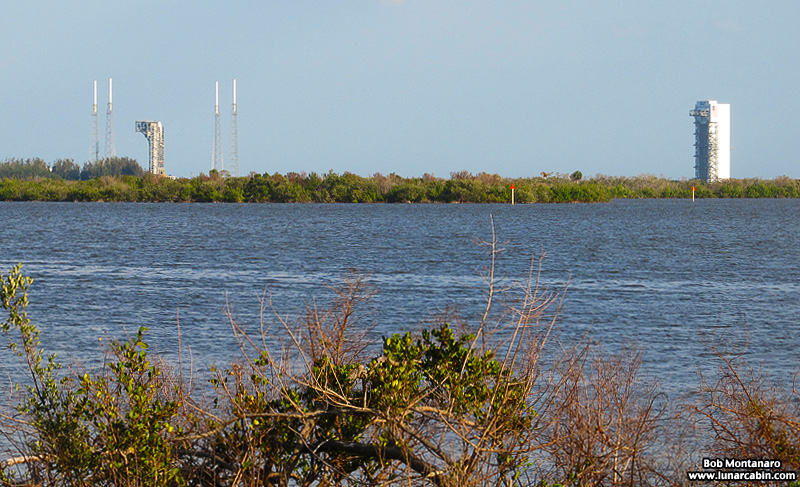 |
|
| A wide angle view shows SLC-41 at left and the Vertical Integration Facility at right which conducts the launch vehicle integration and testing, spacecraft mate and integration operations. When ready for launch, the vehicle is taken on its Mobile Launch Platform via a short railway to the launch pad. | |
 |
|
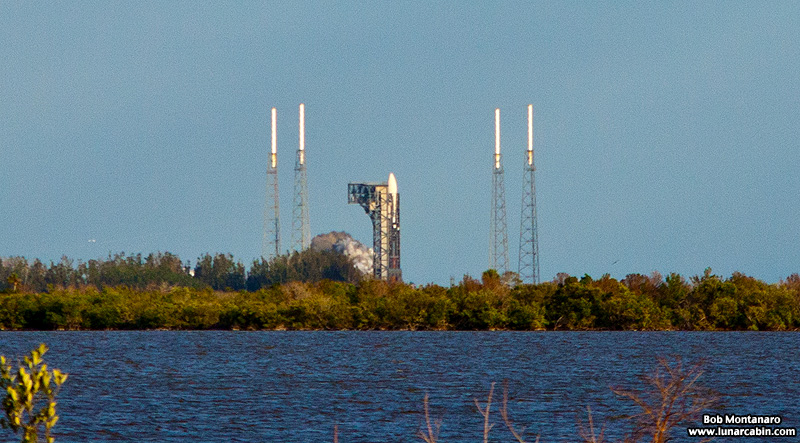 |
|
A cloud of smoke visible just left of the gantry and above the tree line appears at ignition and liftoff of the Atlas V rocket at 5:02 p.m. |
|
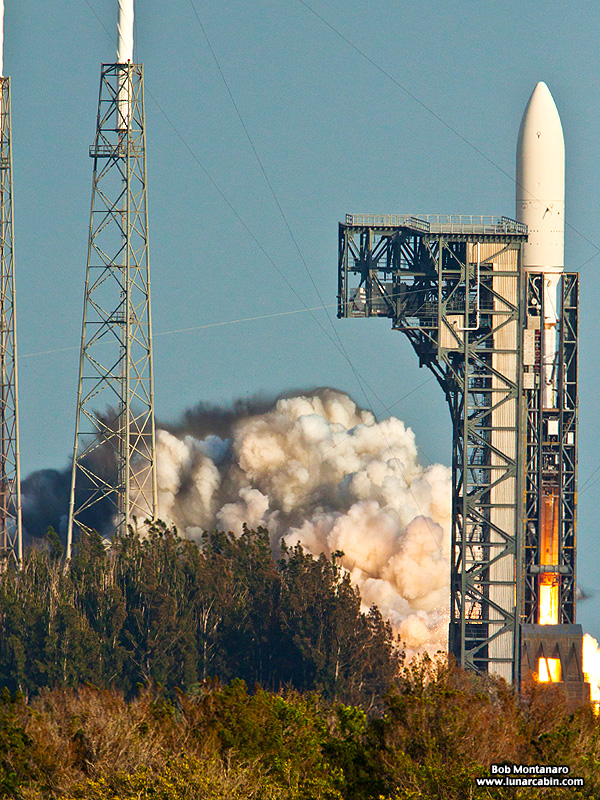 |
|
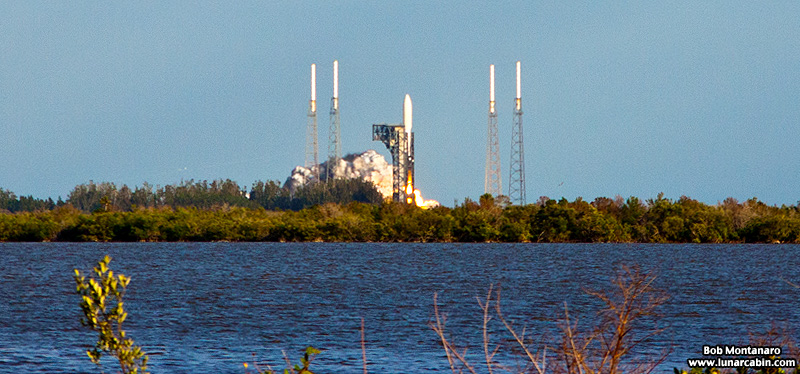 |
|
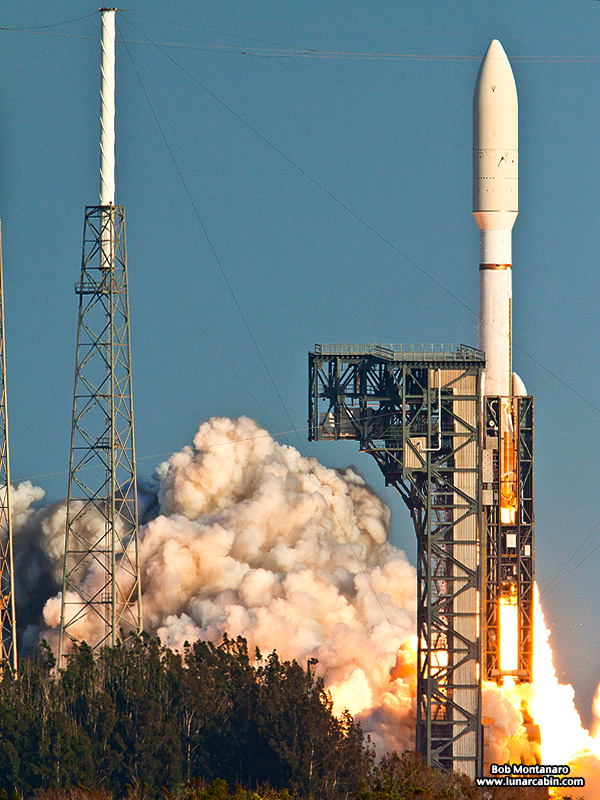 |
|
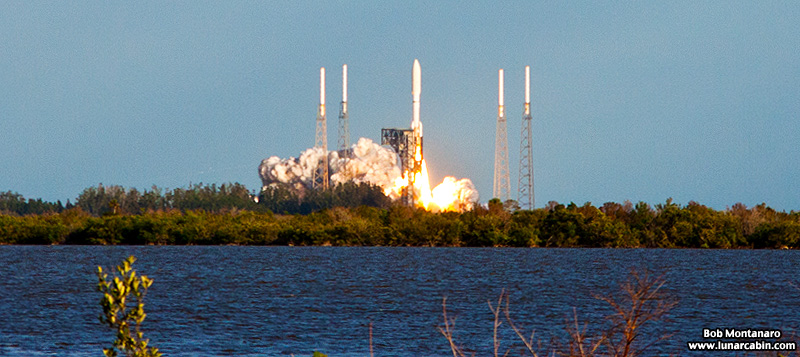 |
|
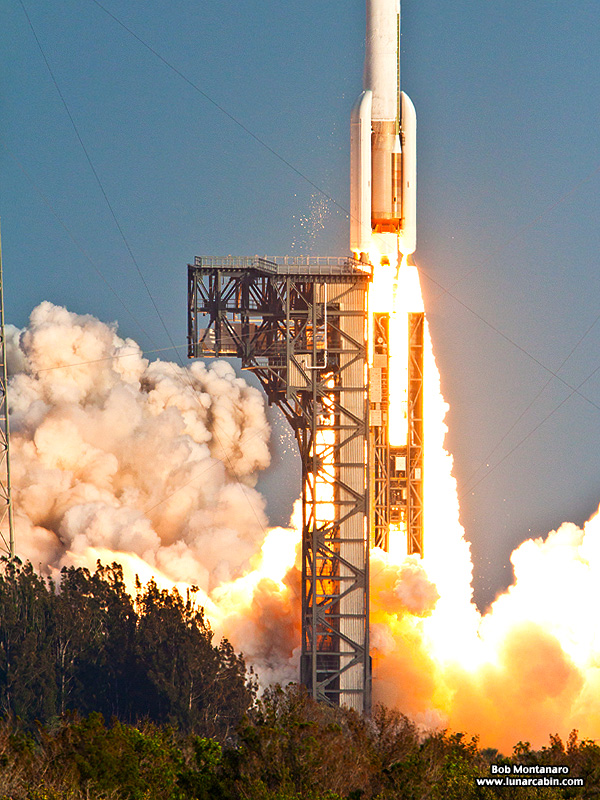 |
|
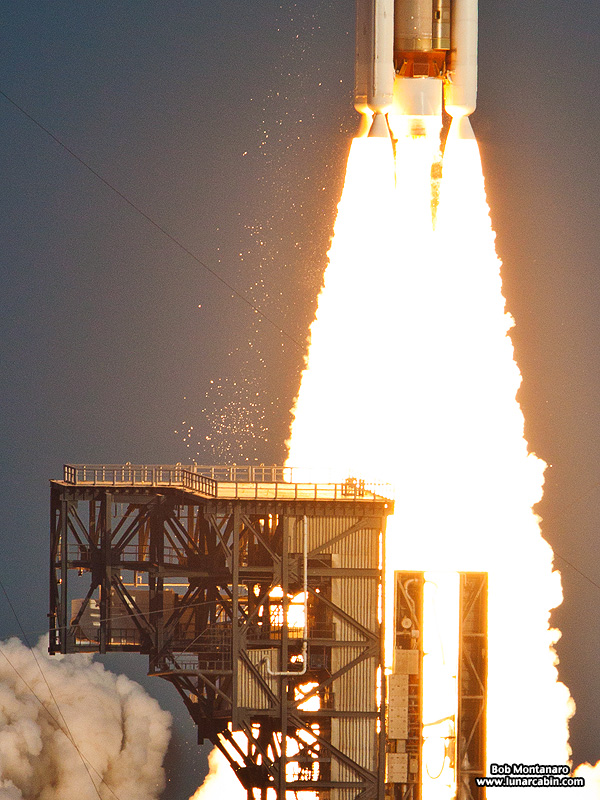 |
|
 |
|
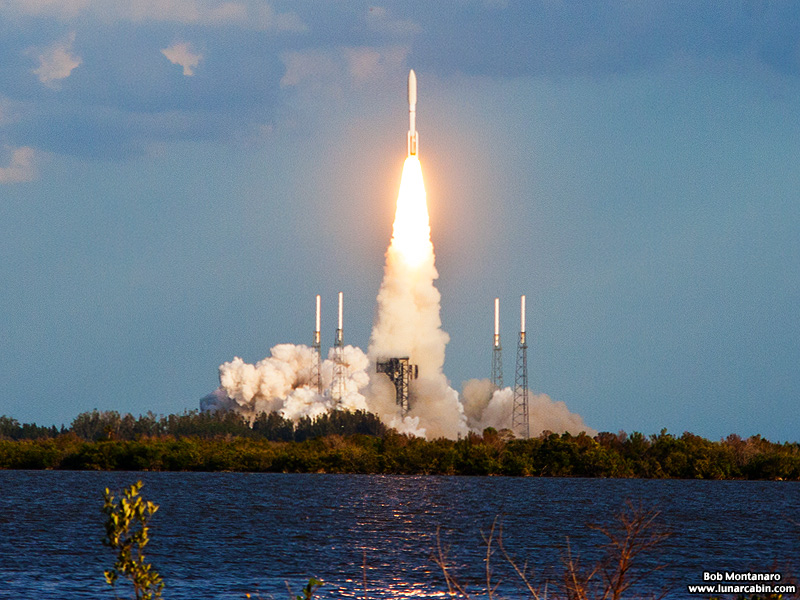 |
|
 |
|
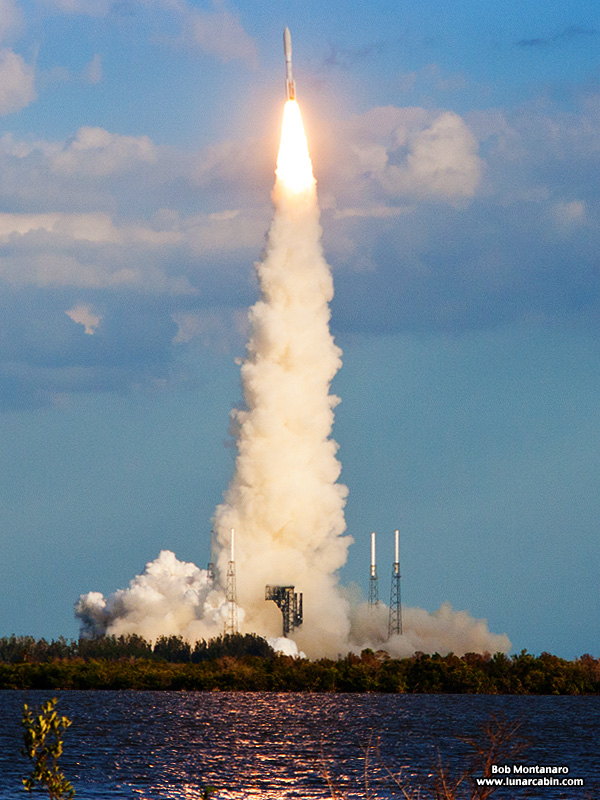 |
|
 |
|
 |
|
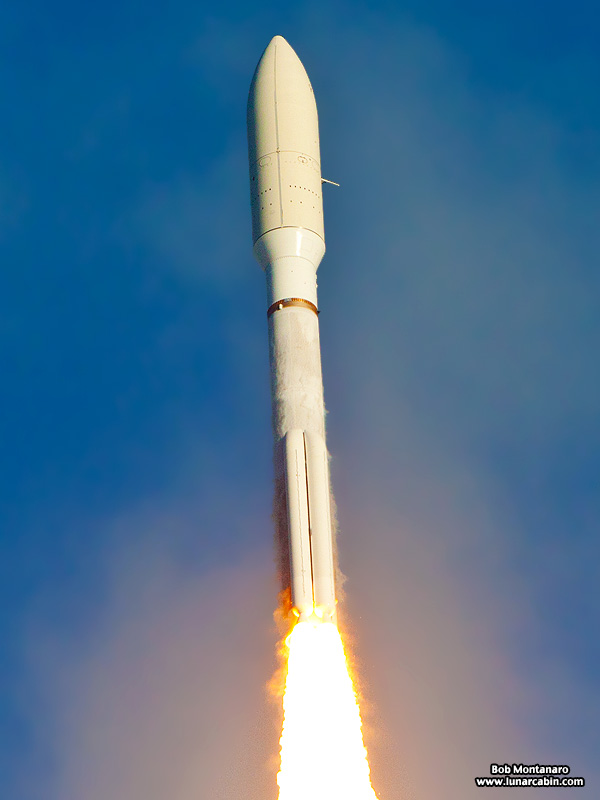 |
|
 |
|
| This is the last view of the rocket before it disappeared behind a cloud that annoyingly hid the rest of the rocket's flight from my vantage point. | |
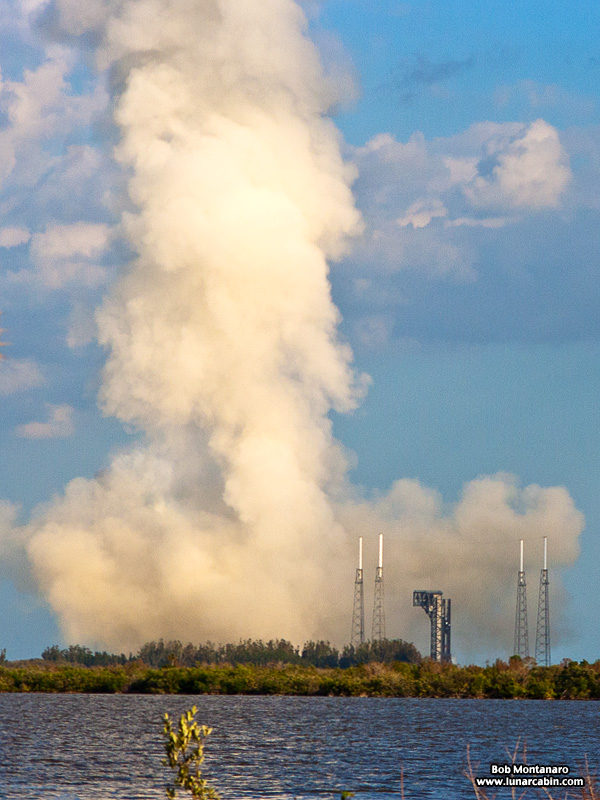 |
|
The exhaust cloud from the four solid rocket boosters still lingers around the pad. |
|
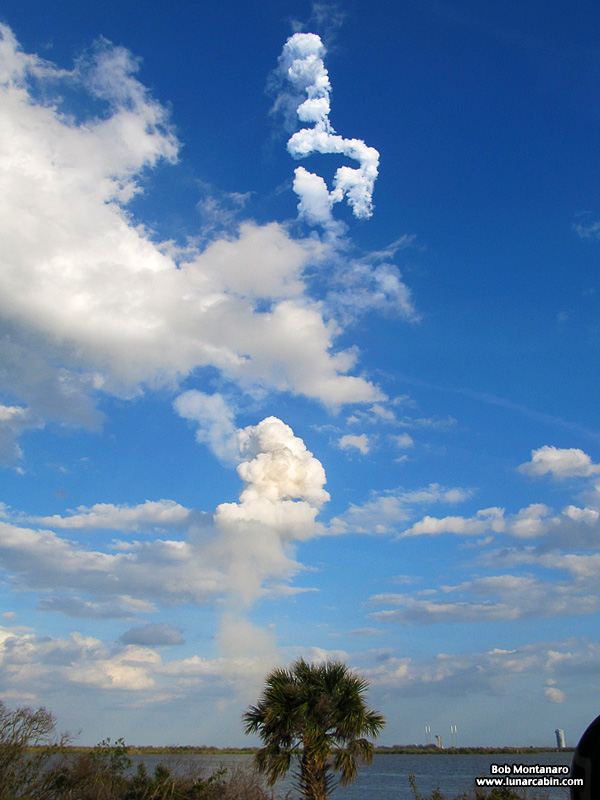 |
|
| The offending cloud has drifted away a bit revealing the now long gone rocket's exhaust trail turning into curlicues by the upper level winds. | |
All contents copyright Lunar Cabin |
|